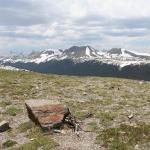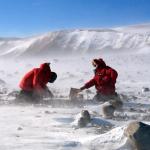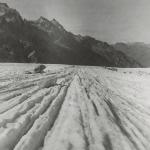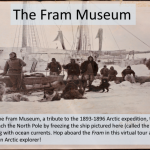Lesson Plans & Activities
Exploring the Arctic
This is the first activity of a three-part curriculum about Arctic climate; the activities may be used independently or in sequence.
This activity introduces students to the Arctic and Arctic climate. Through a virtual exploration of the geography of the Arctic students become familiar with the region. They are then introduced to meteorological parameters that Arctic research teams use.Do you really want to visit the Arctic?
This is the second activity of a three-part curriculum about Arctic climate; the activities may be used independently or in sequence.
This jigsaw activity introduces students with Arctic weather data using a role-playing activity that has students read and interpret graphs while considering the optimal time to plan a research mission to the Arctic.Exploring Arctic Climate Data
This is the third activity of a three-part curriculum about Arctic climate; the activities may be used independently or in sequence.
In this final activity, students use authentic Arctic climate data to explore albedo and its relationship to seasonal snowmelt as a self-reinforcing feedback mechanism, which is then applied to large scale global climate change.VR Expedition: Explore the Arctic Aboard The Fram
This is part of a collection of VR experiences.
Take a virtual stroll through the Fram and learn all about Nansen and his crew's adventures in the Arctic with this virtual expedition. This is a stand-alone resource that is part of a MOSAiC VR collection.VR Expedition: MOSAiC Ice Camp
Take a virtual tour of the MOSAiC Ice Camp in this virtual experience. This is a stand-alone resource that is part of a MOSAiC VR collection.VR Expedition: MOSAiC Distributed Network
Take a virtual tour of the MOSAiC Distributed Network, Fedorov, in this virtual experience. This is a stand-alone resource that is part of a MOSAiC VR collectionPolarPASS Interactive Environments
Using real data, diverse material types, and a range of activities, PolarPASS modules are designed to bring polar science and exploration to the classroom. PolarPASS modules link to Climate Literacy Principles and Polar Literacy Principles and are being tested in teaching models that include semester, quarter, and block teaching models.
Polar Space and Places, or PolarPASS, is connecting polar-focused material with innovative teaching methods to advance STEM undergraduate education and increase polar knowledge.
Module 1: Exploring the Glacier Basin System
This Module consists of five Units, walking students through an overview of the glacier basin system, exploring glacier mass balance, albedo, and surface melt, and looking inside and underneath the glacier. The Units also cover the transition from the glacier margin to land and system responses to climate change.
Earth's polar environments have undergone rapid change during the 21st century and scientists have generated important new data and made groundbreaking insights. Despite growing interest to bring polar-focused material into the undergraduate classroom, curriculum development has lagged. Polar Space and Places, or PolarPASS, is connecting polar-focused material with innovative teaching methods to advance STEM undergraduate education and increase polar knowledge.
Module 2: Long-term Spatial Transformations of the Glacier Basin System
Module 2 is designed to follow after Module 1. Instructors may choose to use Module 2 independently, but may want to consider some additional introductory materials if they are not beginning with Module 1. Module 2 consists of four Units. The Units begin by exploring past ice margin retreat and processes of ice margin retreat and elevation change. The material then explores natural climate variability and anthropogenic forcings, and then examines potential future ice margin response to climate change.
Earth's polar environments have undergone rapid change during the 21st century and scientists have generated important new data and made groundbreaking insights. Despite growing interest to bring polar-focused material into the undergraduate classroom, curriculum development has lagged. Polar Space and Places, or PolarPASS, is connecting polar-focused material with innovative teaching methods to advance STEM undergraduate education and increase polar knowledge.









